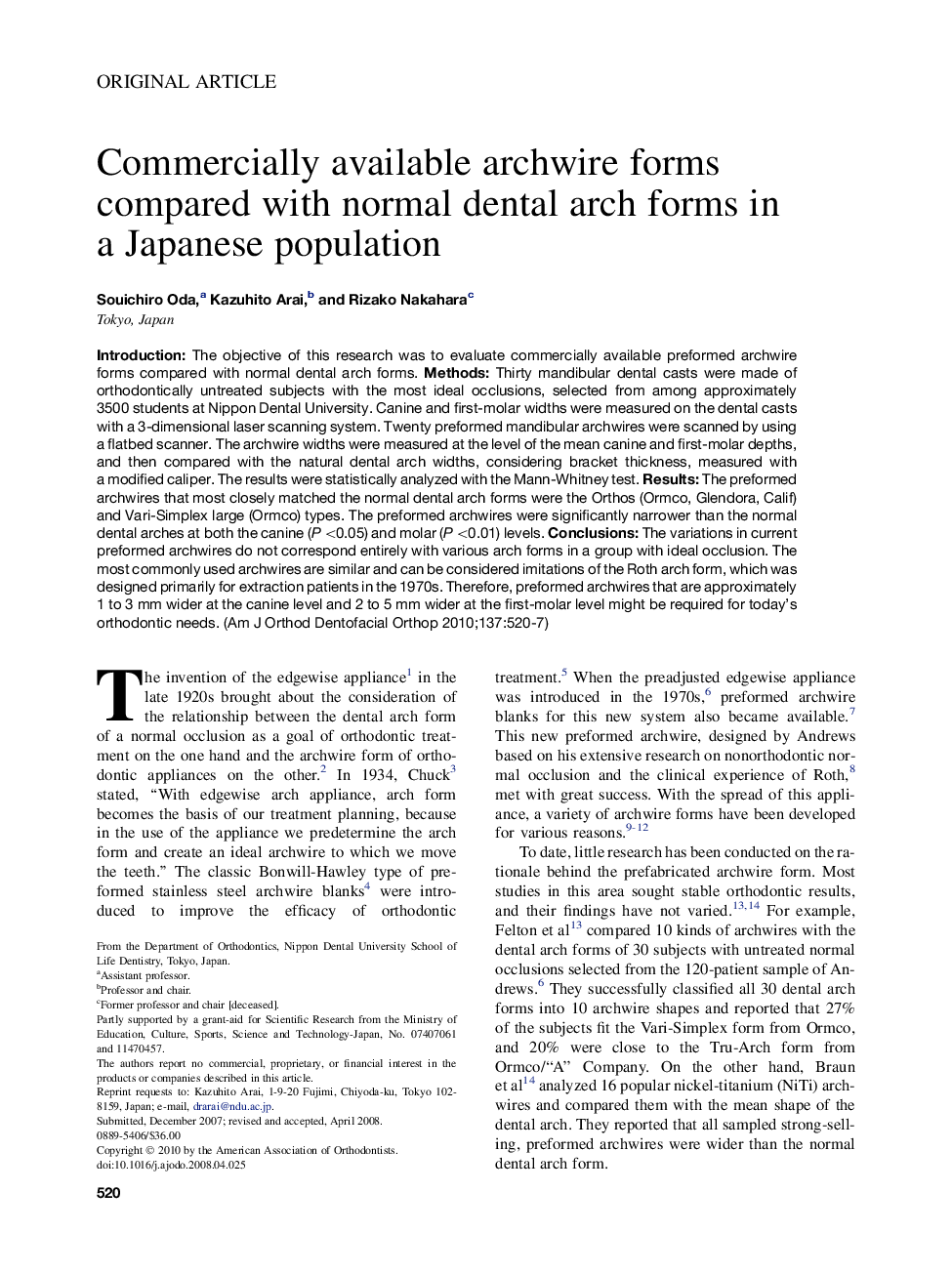| Article ID | Journal | Published Year | Pages | File Type |
|---|---|---|---|---|
| 3117660 | American Journal of Orthodontics and Dentofacial Orthopedics | 2010 | 8 Pages |
IntroductionThe objective of this research was to evaluate commercially available preformed archwire forms compared with normal dental arch forms.MethodsThirty mandibular dental casts were made of orthodontically untreated subjects with the most ideal occlusions, selected from among approximately 3500 students at Nippon Dental University. Canine and first-molar widths were measured on the dental casts with a 3-dimensional laser scanning system. Twenty preformed mandibular archwires were scanned by using a flatbed scanner. The archwire widths were measured at the level of the mean canine and first-molar depths, and then compared with the natural dental arch widths, considering bracket thickness, measured with a modified caliper. The results were statistically analyzed with the Mann-Whitney test.ResultsThe preformed archwires that most closely matched the normal dental arch forms were the Orthos (Ormco, Glendora, Calif) and Vari-Simplex large (Ormco) types. The preformed archwires were significantly narrower than the normal dental arches at both the canine (P <0.05) and molar (P <0.01) levels.ConclusionsThe variations in current preformed archwires do not correspond entirely with various arch forms in a group with ideal occlusion. The most commonly used archwires are similar and can be considered imitations of the Roth arch form, which was designed primarily for extraction patients in the 1970s. Therefore, preformed archwires that are approximately 1 to 3 mm wider at the canine level and 2 to 5 mm wider at the first-molar level might be required for today's orthodontic needs.
